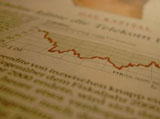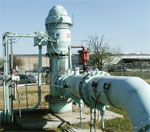
Due to a recent U.S. Supreme Court case, global warming will be a major air pollution issue this year. Depending upon how the full spectrum of global warming issues is resolved, the impacts may extend to even the smallest air emissions sources. Implementation of the ozone and fine particulate matter ambient air quality standards continues as a major issue in 2008.

Overall, the members of Environmental Protection’s 2008 Environmental Roundtable expect economic advances in the environmental industry, especially in the water treatment and air pollution control sectors. That’s the story these 14 environmental executives told us at our annual roundtable on August 28, and they’re sticking to it.

The commercial environmental services industry has certainly been through its share of ups and downs, but at the moment seems to be in a more stable and predictable place than it has been during most of the last 50 years.

2008 Salary Survey
In 1999, when Environmental Protection conducted its annual salary survey, the job outlook was characterized as "Too many dogs chasing too few bones."

2007 was another typical year for the water industry – full of challenges, surprises, frustrations and complexities, but also offering new opportunities. The job of the water utility – to provide safe and affordable water – may sound easy, but in many ways the job continues to get tougher and tougher.

Are you keeping up with the Joneses? The plant down the street replaced its sequencing batch reactor with a membrane bioreactor. And the cross-town facility opted for ultraviolet over its chlorine disinfection program. What's the water industry coming to?

Major judicial decisions continue to shape water law in significant ways even though the Clean Water Act is 35 years old. Recent court decisions have shown a willingness of parties to attack the policies and programs of the U.S. Environmental Protection Agency and U.S. Army Corps of Engineers, and some courts have disregarded "judicial deference" to EPA.

Reliability is paramount to the monitoring and control of water/wastewater facilities. With facilities relying on real-time data transfer between remote systems and plant control areas, managers and operators cannot afford downtime or errors in information transfer.

Why is operator math necessary? It is needed to evaluate how well a plant is performing, or what the plant is capable of treating adequately. State authorities consider the topic important enough to include at least a little math on even the lowest level certification exams.
Since 2001, communities have increased their investment in water security efforts. The U.S. Environmental Protection Agency gave $51 million in grants in fiscal 2002 for vulnerability assessments and has since provided more than $150 million for tools, training, and technical assistance to the water sector, states, and other groups, according to Jennifer B. Nuzzo, a senior analyst for the Center for Biosecurity at the University of Pittsburgh Medical Center.
This article originally appeared in the 12/01/2007 issue of Environmental Protection.
October 18, the day the Clean Water Act (CWA) became law 35 years ago, came and went without any significant water laws being enacted. But just 19 days later, Congress overrode President Bush’s veto of the Water Resources Development Act.
This article originally appeared in the 12/01/2007 issue of Environmental Protection.
Assistant Administrator for Water Benjamin Grumbles said, “We need to continue to evolve and adapt our approaches” for achieving better water quality. The EPA water chief was the keynote speaker during WEFTEC’s Clean Water Act plenary session in October.
This article originally appeared in the 12/01/2007 issue of Environmental Protection.
Facility designers traditionally have used two-dimensional (2-D) drawings to illustrate plans, sections, and associated information to their clients. This format requires reviewers to have strong visualization skills. It often lacks sufficient detail in the early stages, giving reviewers little to comment on until the drawings are nearly complete. By that time, changes are costly and time-consuming.
This article originally appeared in the 12/01/2007 issue of Environmental Protection.

The view of our planet from space masks a perplexing irony. With water covering 71 percent of the Earth’s surface, we would expect plenty of this life-sustaining resource to go around.
This article originally appeared in the 12/01/2007 issue of Environmental Protection.
A Garland, Texas, interceptor project took five years to get to the street. Now the contractors are making capacity improvements a reality by installing 48-inch outside diameter (OD) pipe over about 18 months.
This article originally appeared in the 12/01/2007 issue of Environmental Protection.
This article originally appeared in the 11/01/2007 issue of Environmental Protection.
The business of protecting, improving, and providing information related to the global environment is growing. This emerging “green” economy has a solid base and the trends are very positive.
This article originally appeared in the 11/01/2007 issue of Environmental Protection.
With an innovative design that integrates a state-of-the-art biosolids drying facility with the heat from a combined-cycle cogeneration plant, Corona, Calif.’s Clearwater Wastewater Treatment Plant No. 1 is helping to save energy.
This article originally appeared in the 11/01/2007 issue of Environmental Protection.
This article originally appeared in the 11/01/2007 issue of Environmental Protection.
This article originally appeared in the 11/01/2007 issue of Environmental Protection.